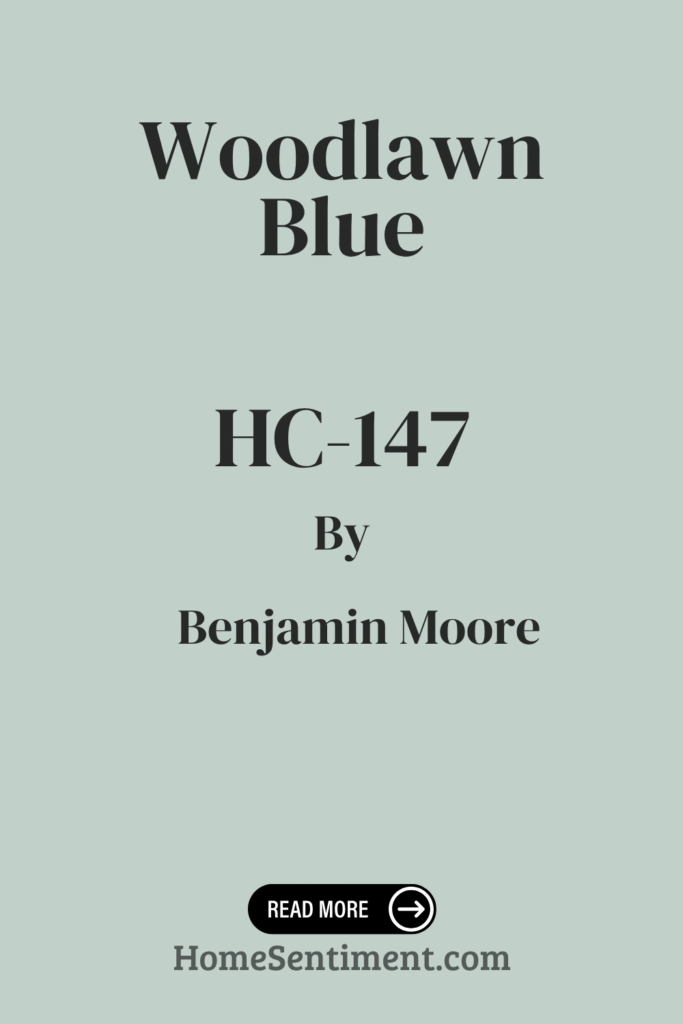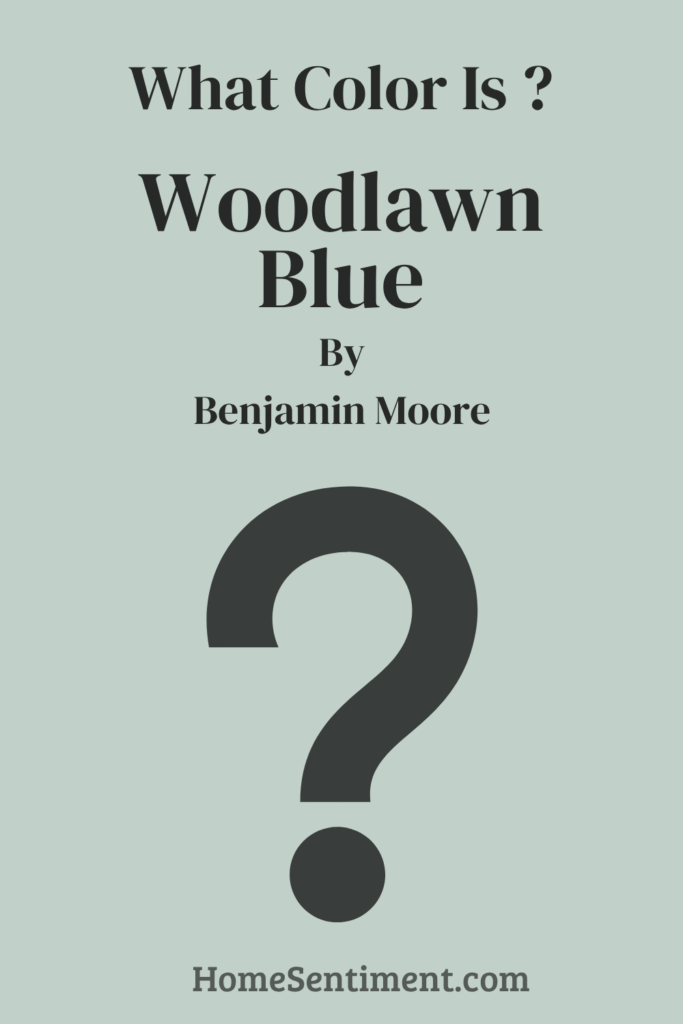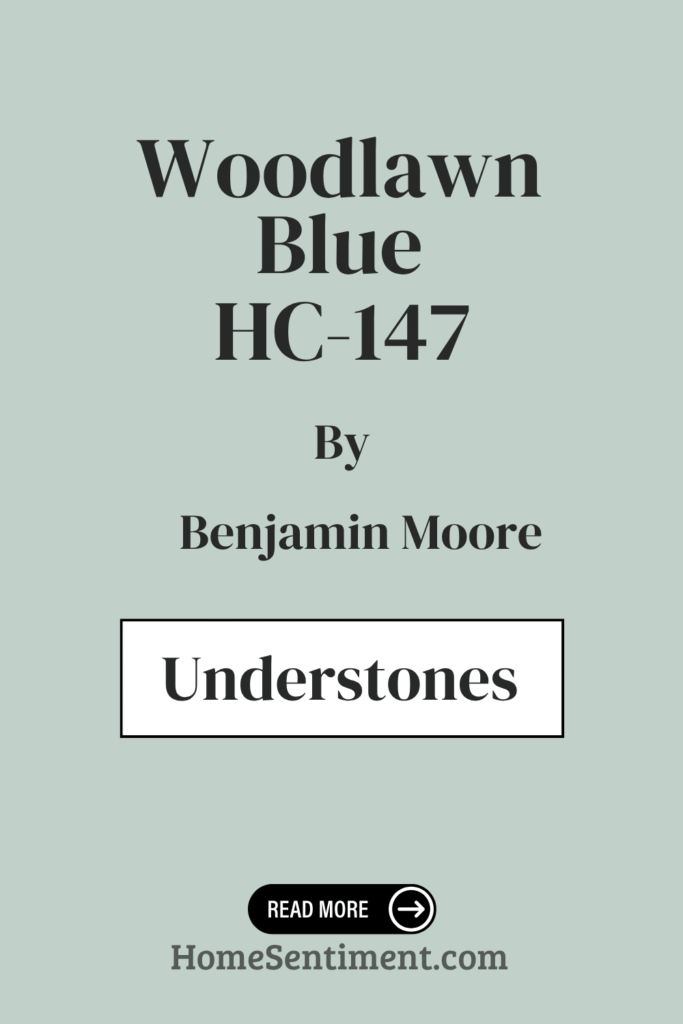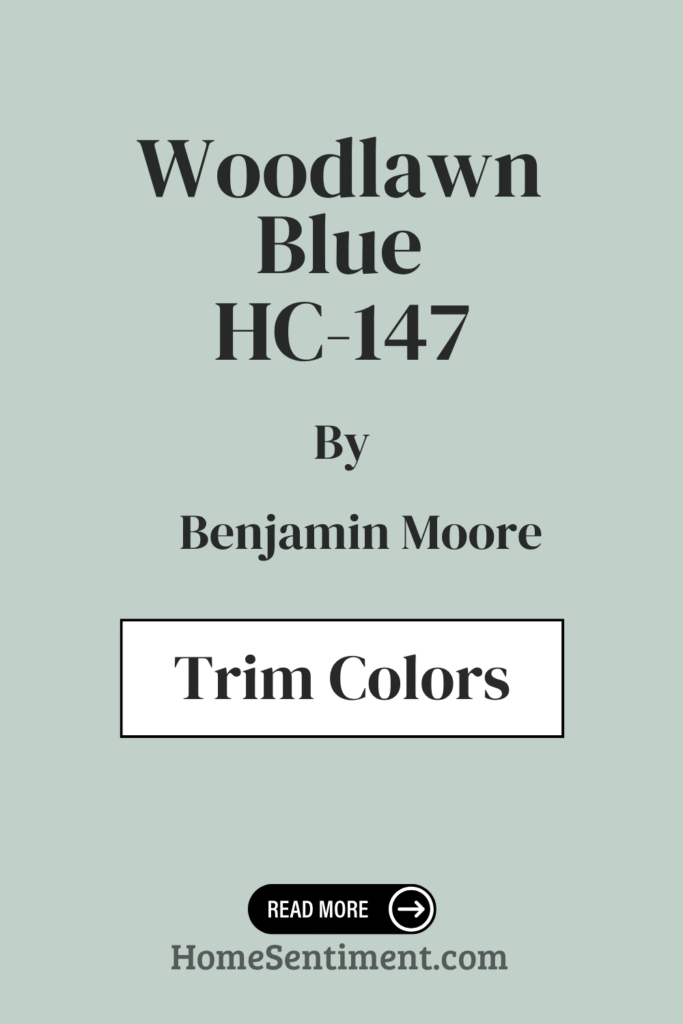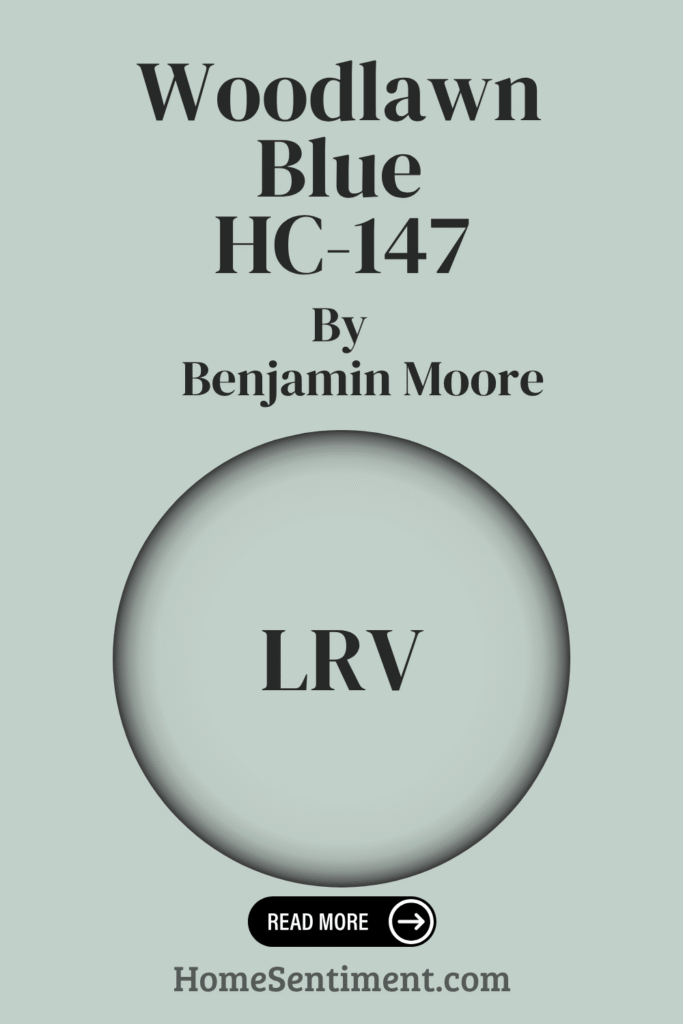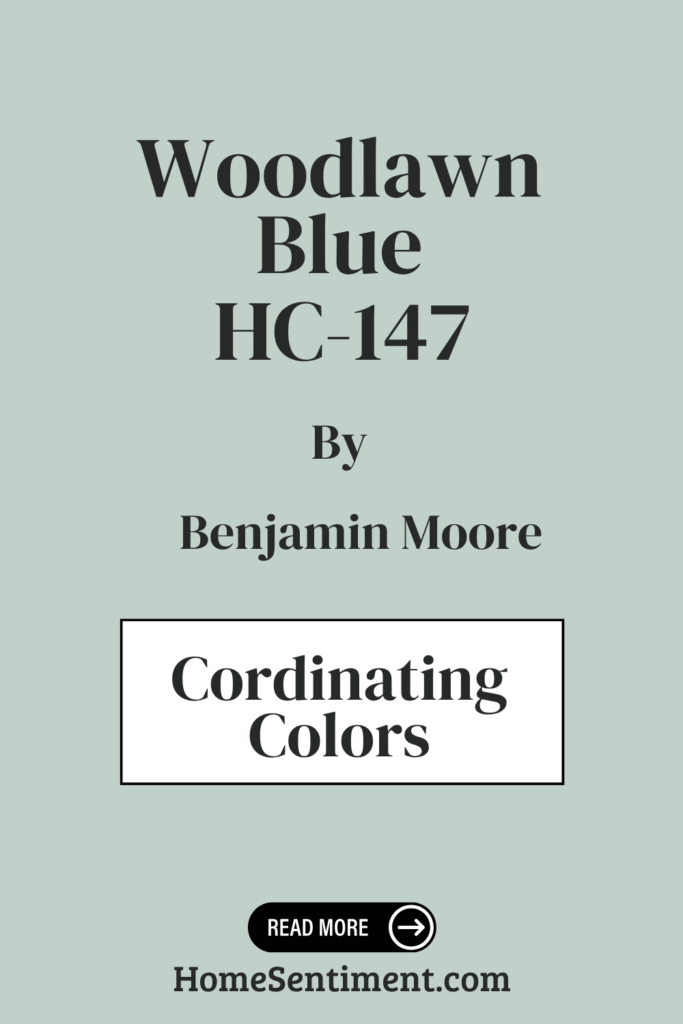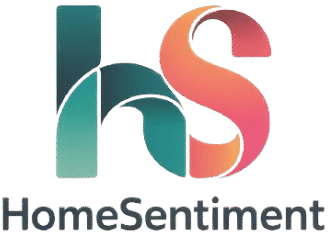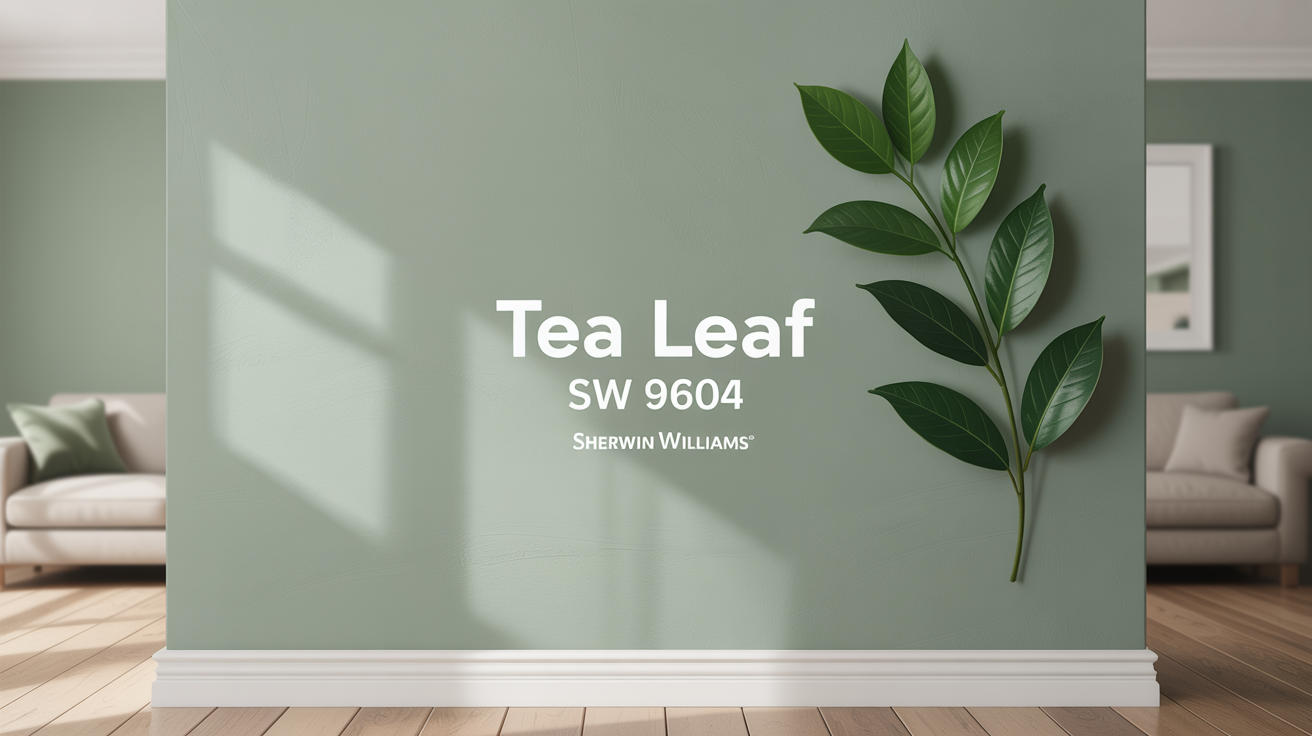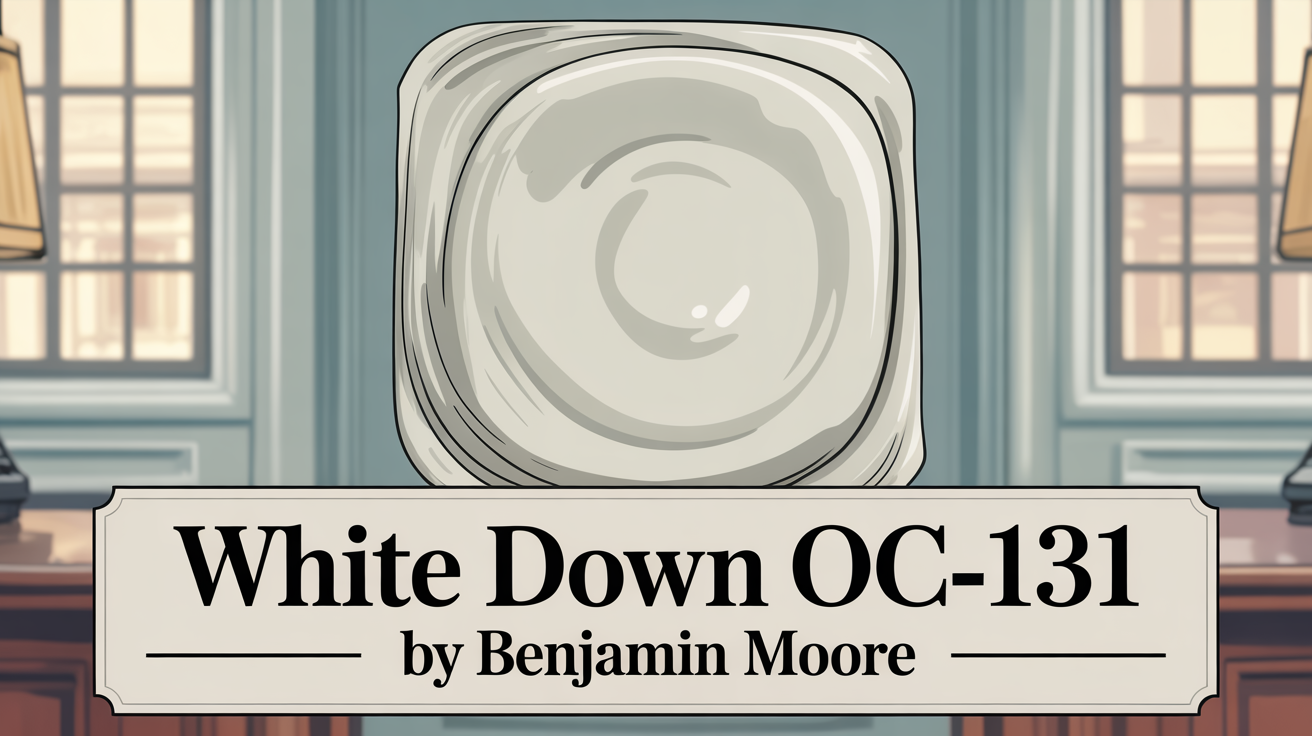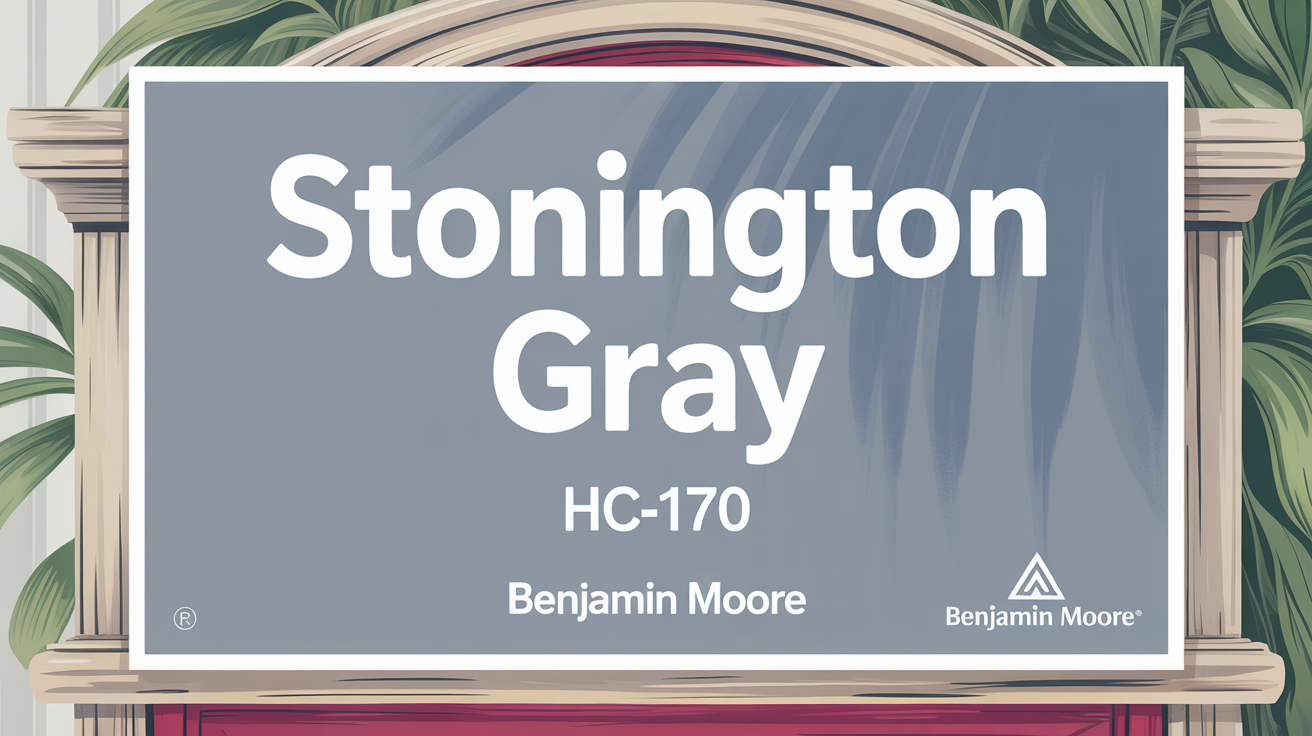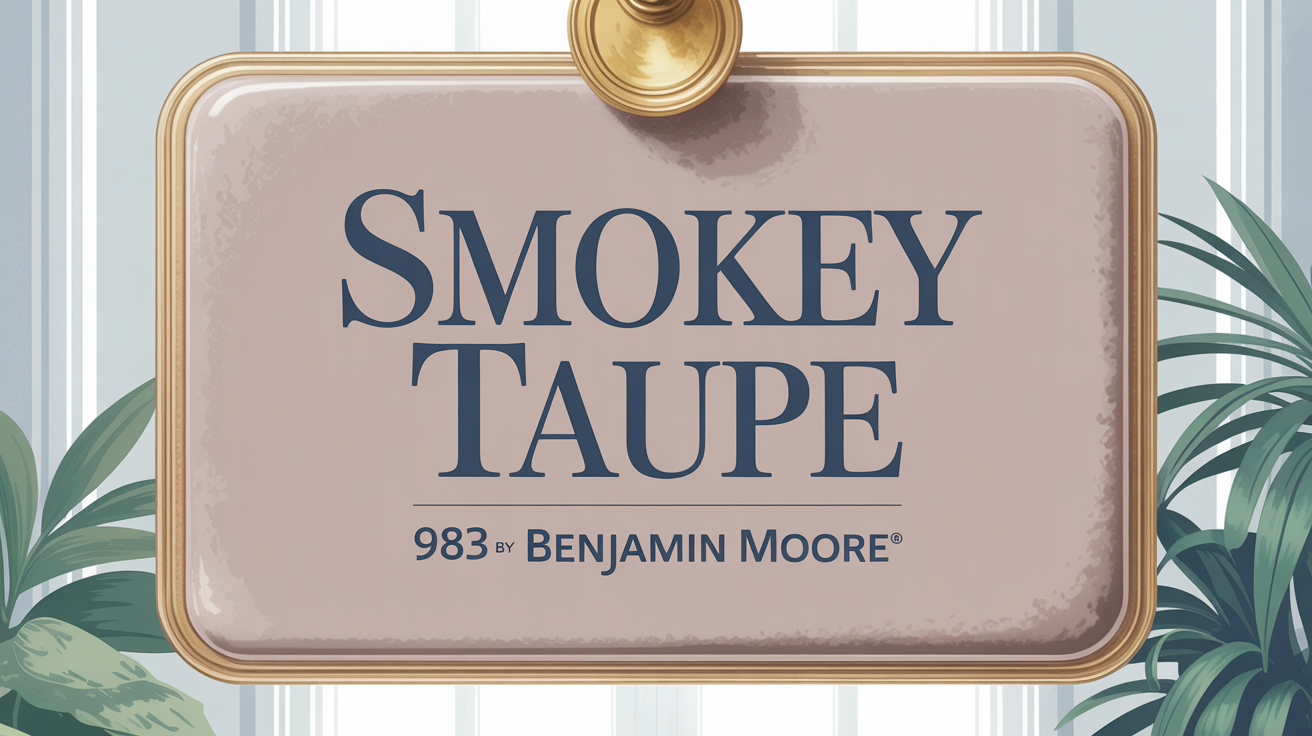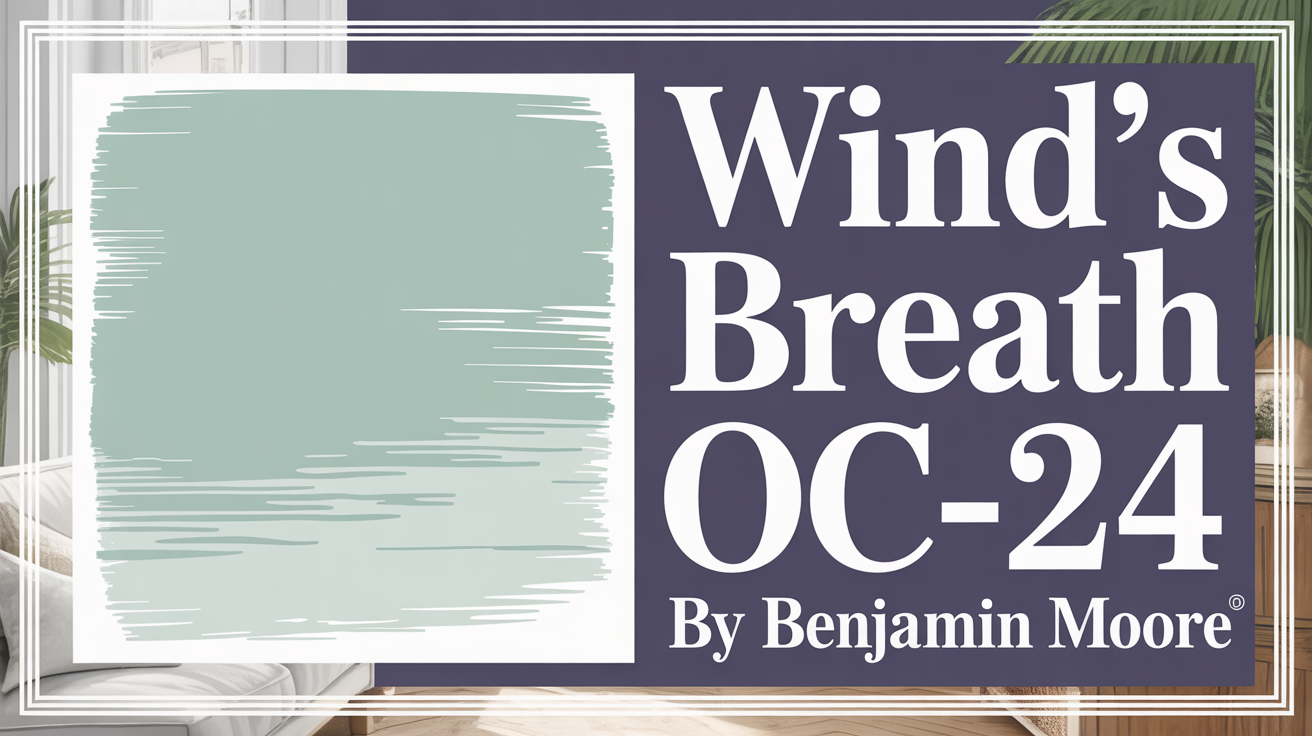Discover the Serene Charm of Woodlawn Blue HC-147 by Benjamin Moore
Choosing the right color when refreshing a space is so important because it truly sets the mood. If you’re looking for a shade that stands out for its charm and elegance, you really should consider HC-147 Woodlawn Blue by Benjamin Moore.
It’s a soft, muted blue with subtle hints of green. This combination creates a gentle and calming atmosphere you’ll love.
A Calming Hue for Serene Spaces
Imagine a color that brings a sense of calm to any room in your house. That’s exactly what Woodlawn Blue does. It has this unique ability to be a serene backdrop that works beautifully with different decor styles.
Pair it with whites or creams for a classic vibe. Or, mix it with deeper grays and charcoals if you’re aiming for something more contemporary. This color doesn’t shout for attention; it gently whispers. Its soft undertones make a room feel both cozy and inviting, yet sophisticated. It’s perfect if you want to add color without going too bold or vibrant.
For subtle elegance at home, give HC-147 Woodlawn Blue a look. It can truly transform any space into a peaceful haven where you can relax and recharge.
What Color Is Woodlawn Blue HC-147 by Benjamin Moore?
So, what exactly is Woodlawn Blue HC-147? It’s a soft, gentle shade that feels like it rests right between blue and gray. It definitely offers a serene and inviting feel.
Its muted quality is key because it allows it to act as a neutral backdrop. But, it still adds a lovely touch of color. This versatility makes it an excellent choice for many interior styles.
In coastal-themed spaces, for instance, Woodlawn Blue can feel like the calm sea. It pairs wonderfully with natural elements like driftwood and jute. It also fits right into a farmhouse style, complementing rustic wood tones and whitewashed finishes.
For a modern, contemporary look, Woodlawn Blue works alongside sleek, minimalist furniture and metallic accents. Its understated elegance can even soften industrial spaces when combined with exposed brick and concrete textures. And in traditional settings, this color enhances classic furniture and ornate details, creating a soothing ambiance.
Thinking about materials and textures? Woodlawn Blue pairs harmoniously with fabrics like linen, velvet, and cotton. They add warmth and softness. It balances darker woods like walnut or oak and complements lighter woods such as pine or birch. Adding elements like woven baskets or ceramic vases in neutral tones can really bring out the peaceful atmosphere of Woodlawn Blue.
Is Woodlawn Blue HC-147 by Benjamin Moore Warm or Cool Color?
Woodlawn Blue HC-147 is a soft, calming shade of blue with those subtle hints of gray-green we talked about. It’s a versatile color that just works well in many different rooms.
In living rooms, it creates a serene and inviting atmosphere. It can actually make these spaces feel more open and airy. When used in bedrooms, this color actively promotes relaxation and restfulness. It really offers a peaceful backdrop for sleep.
For kitchens and bathrooms, Woodlawn Blue brings a crisp, clean look. It pairs nicely with both modern and traditional fixtures. It complements natural wood tones and white trims beautifully. This color enhances the overall aesthetic without taking over the space.
Interestingly, it adapts well to different lighting. It can appear warmer in natural sunlight and cooler in artificial light. This adaptability makes it a great choice for creating a cohesive look throughout your home. Whether on walls, cabinetry, or accent pieces, Woodlawn Blue offers a subtle touch of color that feels both fresh and timeless.
What is the Masstone of Woodlawn Blue HC-147 by Benjamin Moore?
Let’s get a little technical for a moment. Woodlawn Blue HC-147 is a soft color with a light gray masstone. The specific light gray is #D5D5D5. This gentle gray undertone is what makes it such a versatile choice for home interiors.
Because of this light, airy feel, Woodlawn Blue actually opens up spaces. It makes rooms seem larger and more inviting. This color works well in living rooms, kitchens, or bathrooms, providing a calm setting.
That light gray base allows Woodlawn Blue to pair beautifully with both warm and cool tones. You can combine it with crisp white trim for a fresh, clean look. Or, complement it with rich navy or charcoal accents for added depth. The subtle hint of blue provides just enough color without being overwhelming. It’s truly ideal for creating a soft, serene environment. Thanks to its adaptability and timeless appeal, Woodlawn Blue can suit pretty much any style, from modern minimal to classic traditional.
Undertones of Woodlawn Blue HC-147 by Benjamin Moore
Woodlawn Blue HC-147 is a versatile paint color thanks to its unique blend of undertones. While the main color is a soft blue, it subtly includes hints of other colors. These include light blue, pale yellow, light purple, mint, lilac, pale pink, and grey. These hidden shades change how we see the color as lighting and surroundings shift.
Undertones really influence a color’s look. Light blue and mint undertones make the blue feel cool and fresh. Pale yellow adds a touch of warmth. The presence of light purple and lilac can lend a gentle hint of elegance or sophistication. Pale pink brings a softness. And grey can ground the color, giving it depth and neutrality.
On interior walls, Woodlawn Blue HC-147 shows these undertones beautifully. In natural sunlight, the blue looks crisp and airy because of the light blue and mint undertones. With warm artificial lighting, pale yellow and pale pink might come through, adding coziness. The grey undertones make it versatile, allowing it to pair well with various colors and styles. This makes a room feel both serene and flexible. The subtle play of its undertones helps Woodlawn Blue create an inviting and adaptable atmosphere.
Coordinating Colors of Woodlawn Blue HC-147 by Benjamin Moore
Coordinating colors are simply those that work harmoniously together. They create a balanced and pleasing look in a space. When coordinating colors with Woodlawn Blue HC-147, you’ll want to choose shades that enhance its soft, muted blue-green tones.
Here are some recommended coordinating colors:
- Tawny Port 1281: This is a rich, bold wine color. It provides a striking contrast to Woodlawn Blue. Its deep, warm hue adds depth, making a room feel inviting and elegant when paired with Woodlawn Blue’s subtle coolness.
- HC-168 Chelsea Gray: A classic medium gray that works as a sophisticated neutral. It balances the lightness of Woodlawn Blue, creating a refined combination.
- OC-130 Cloud White: This is a soft, warm white that harmonizes beautifully with Woodlawn Blue’s gentle tones. It brightens the space without overpowering the blue, keeping things airy.
- OC-151 White: A crisp, clean white that brings a fresh, modern touch. It complements the understated elegance of Woodlawn Blue perfectly.
Together, these coordinating colors give you a versatile palette. You can achieve various styles, from traditional to contemporary, while ensuring each room feels unified and harmonious.
How Does Lighting Affect Woodlawn Blue HC-147 by Benjamin Moore?
Lighting is incredibly important when it comes to how colors appear. The same paint color can look completely different depending on the light source. Light affects our perception of color, brightness, and contrast.
Woodlawn Blue HC-147 is a soft blue-green color. How it looks can change based on whether the light is natural or artificial, and even the direction a room faces.
In artificial light, the type of bulb matters. Incandescent bulbs give off a warm, yellowish light. This can make Woodlawn Blue appear warmer and sometimes bring out more of its green tones. Fluorescent lights, on the other hand, tend to be cooler. They can make the color look a bit duller or more muted. LED lights are available in warm to cool options and will affect the color based on their kelvin temperature.
Natural light varies throughout the day and is affected by the room’s orientation.
- North-facing rooms: The light is generally cooler and softer here. This can make Woodlawn Blue appear crisper and a bit more subdued. The cool light enhances the blue tones, making it feel more tranquil and calm.
- South-facing rooms: These rooms get stronger, warm light all day. This warm light can make the color appear more vibrant. It can also bring out the green undertones, giving it a livelier feel.
- East-facing rooms: You’ll see bright, warm light in the morning, then cooler light in the afternoon. In the morning, the color might seem brighter and cheerier. In the afternoon, it can feel cooler and more reserved.
- West-facing rooms: They have cooler light in the morning. But, they get warmer light in the afternoon and evening. Woodlawn Blue will look more muted early in the day. It gains more warmth and depth later as it reflects the richer, golden light of the setting sun.
Understanding these lighting conditions is key to choosing the right color for your room. It helps ensure it looks the way you want throughout the day.
What is the LRV of Woodlawn Blue HC-147 by Benjamin Moore?
Let’s talk about LRV, or Light Reflectance Value. This is a measurement of how much light a color reflects when it’s on a surface. It’s shown as a percentage from 0% (pure black, absorbing all light) to 100% (pure white, reflecting all light). A low LRV means a color absorbs more light, which can make a room feel cozier or smaller. A high LRV means the color reflects more light, making spaces seem brighter and more open.
Understanding the LRV helps you predict how a color will look under different lighting. For example, a color might seem dull in a dimly lit room. But the same color with a higher LRV will feel livelier in that same space.
Woodlawn Blue HC-147 by Benjamin Moore has an LRV of 60.65. This means it reflects a fair amount of light. This makes it a versatile choice for different rooms, especially where you want a light and airy atmosphere. Since it reflects over half the light, it has the ability to brighten rooms without being overwhelming. This makes it an excellent choice for creating a calm and inviting feel. Depending on the room’s lighting, Woodlawn Blue might appear more vibrant in areas with lots of natural light and softer in dimmer spaces. It provides a gentle, harmonious backdrop.
What are the Trim Colors of Woodlawn Blue HC-147 by Benjamin Moore?
Trim colors are the shades used on things like baseboards, door casings, and window frames. They’re important because they frame the main wall color. They create contrast and add depth to your design.
With Woodlawn Blue HC-147, which is that soothing, soft blue with green undertones, choosing the right trim color can really enhance its appearance. Pairing it with the right trims makes the overall look more cohesive and appealing. It highlights the subtle tones in Woodlawn Blue and helps the room feel welcoming and harmonious.
Here are some recommended trim colors:
- OC-122 Cotton Balls: This offers a crisp, clean white. It complements Woodlawn Blue beautifully, providing a clear contrast that accentuates the blue hues. Cotton Balls is a versatile white that isn’t too stark, giving a warm touch to the edges.
- OC-72 Pink Damask: This provides a soft pink trim alternative. It offers a gentle, comforting edge that adds warmth and charm alongside Woodlawn Blue. This pairing brings out the gentler, inviting aspects of the blue, making the room feel cozy yet elegant.
Each trim color choice adds a different character to the room. They truly enhance Woodlawn Blue in unique ways.
Colors Similar to Woodlawn Blue HC-147 by Benjamin Moore
Sometimes it helps to see colors that are similar to understand a shade better. Similar colors help create harmony and balance in design. Woodlawn Blue HC-147 is a peaceful shade that, when paired with its similar colors, creates a cohesive look.
Colors that blend effortlessly with Woodlawn Blue include:
- HC-144 Palladian Blue
- 701 Swept Away
- 687 Annapolis Green
- 688 Seacliff Heights
Palladian Blue is a soft, calming hue with a slight gray undertone, offering a serene quality. Swept Away is a gentle, airy shade that captures a sense of lightness. Annapolis Green has a refreshing vibe with green hints that evoke a cool, natural feel. Seacliff Heights is a deeper tone, reminiscent of the sea and sky meeting on the horizon, bringing subtle richness. Together, these colors help create a soothing environment. This harmonious blend enhances any space with peace and unity, making it feel more connected and complete.
Colors that Go With Woodlawn Blue HC-147 by Benjamin Moore
Beyond just similar shades, certain colors pair wonderfully with Woodlawn Blue HC-147 to create a balanced and harmonious space.
Here are some colors to consider pairing with Woodlawn Blue:
- 866 Winter Ice: A delicate and cool shade that brings freshness and light. It complements Woodlawn Blue well, enhancing the airy vibe of the room.
- 643 Steamed Spinach: This provides a rich, earthy contrast. This deep green adds warmth and depth, offering a striking balance against Woodlawn Blue’s cooler tones.
- 636 Willow Grove: A gentle, muted green that adds a hint of nature’s calmness. It’s a great partner for Woodlawn Blue.
- 703 Catalina Blue: This is a more intense, deep blue shade. It can ground your space while still maintaining a cohesive look.
- 704 Del Mar Blue: A vibrant and bold blue that adds energy to your decor. It complements Woodlawn Blue’s softness nicely.
- 684 Shenandoah: Brings subtle elegance with understated teal undertones. It provides a sophisticated touch to the overall color scheme.
These colors work together to create a balanced and inviting space. They truly enhance the natural beauty of Woodlawn Blue.
How to Use Woodlawn Blue HC-147 by Benjamin Moore In Your Home?
Woodlawn Blue HC-147 is a soft, soothing color that brings a sense of calm to any space. This gentle blue tone works well in many rooms. It adds an airy and refreshing feel.
- Living Rooms: It pairs nicely with crisp white trim and light-colored furniture. This creates a bright and welcoming environment.
- Bedrooms: Bedrooms gain a peaceful quality with this hue. It actively promotes restful sleep when used for walls or bedding accents.
- Kitchens: Woodlawn Blue can complement white or light wood cabinetry. This offers a clean and tidy appearance. Adding gray or natural wood accents helps ground the space while keeping its light and soft feel.
- Bathrooms: Bathrooms become serene sanctuaries with this color. It pairs well with both silver and gold metallic fixtures.
Overall, Woodlawn Blue HC-147 is a versatile option if you’re looking to bring calm and elegance to your home. It does this without overwhelming other design elements.
Woodlawn Blue HC-147 vs. Annapolis Green 687 by Benjamin Moore
Let’s compare Woodlawn Blue to Annapolis Green 687. Woodlawn Blue HC-147 is that soft, muted blue with a hint of green we’ve discussed. It creates a calm and soothing atmosphere, making it great for spaces where relaxation is key. It works well in bedrooms and bathrooms, offering a serene backdrop that pairs beautifully with neutral tones and natural materials.
Annapolis Green 687 is quite different. It’s distinctly more vibrant, offering a pleasing balance between blue and green. It embodies a lively and refreshing vibe. This makes it suitable for areas that need more energy, like kitchens or living rooms. Annapolis Green brings a touch of nature indoors and complements both modern and traditional decor.
While Woodlawn Blue leans serene and understated, Annapolis Green is brighter and more invigorating. Your choice really depends on the mood you want: peaceful with Woodlawn Blue or lively with Annapolis Green. Both hues serve well in different contexts, catering to varied tastes and design needs.
Woodlawn Blue HC-147 vs. Palladian Blue HC-144 by Benjamin Moore
Woodlawn Blue HC-147 and Palladian Blue HC-144 are both popular for bringing calm to a room. Woodlawn Blue is that subtle blue-green shade, leaning towards a muted teal. It often feels like a gentle breeze, offering a soft backdrop that works well with both light and dark furnishings.
Palladian Blue is similar but has a bit more of a gray undertone. It also tends to be slightly lighter. It often resembles the color of the sky at dawn, bringing a fresh and airy feel. Both colors work well in various settings, like bedrooms or bathrooms, because they are so soothing.
When you’re deciding between these two, think about the light in your room. Woodlawn Blue might deepen in shaded areas. Palladian Blue can maintain its lightness, enhancing the overall brightness of a space.
Woodlawn Blue HC-147 vs. Seacliff Heights 688 by Benjamin Moore
Comparing Woodlawn Blue HC-147 to Seacliff Heights 688 is interesting. Woodlawn Blue is our soft, muted blue with that hint of green. It’s described as calming and fits well in bedrooms and living spaces. This shade evokes a peaceful atmosphere, like a clear, tranquil sky or a serene lake.
Seacliff Heights 688 leans more towards a vibrant and deeper blue. It brings a stronger presence to any room, creating a lively and energetic feel. While it still has some calming qualities like other blues, its richer tone adds boldness. This makes it well-suited for spaces where you want more drama or personality.
Both colors work beautifully in coastal-themed designs. Woodlawn Blue, being softer, complements neutral or earthy tones easily. Seacliff Heights pairs well with crisp whites or bright accents. Choose between them based on whether you want a subtle, peaceful environment or one with more intensity and character.
Woodlawn Blue HC-147 vs. Swept Away 701 by Benjamin Moore
Finally, let’s look at Woodlawn Blue HC-147 versus Swept Away 701. Woodlawn Blue is our gentle, muted blue with hints of gray and green. This gives it a calm and sophisticated look. It’s versatile and works well in settings like living rooms or bedrooms, providing a serene and inviting atmosphere. Its subtle undertones help it adapt to different lighting, from natural daylight to soft evening light.
Swept Away 701 is lighter and airier compared to Woodlawn Blue. This color leans more toward a pastel blue with slight touches of green. The result is a fresh and breezy feel. It’s particularly suitable for spaces where you’re aiming for a light, open, and cheerful vibe, such as bathrooms or kitchens.
While both colors offer calm and relaxation, Woodlawn Blue provides more depth and sophistication. Swept Away brings brightness and a sense of openness. Your choice here depends on the specific mood and atmosphere you want for your space.
Conclusion
Thinking about HC-147 Woodlawn Blue by Benjamin Moore, it’s easy to see why it’s so appealing. Its gentle blend of blue and green truly creates a calming atmosphere. This seems to suit so many different settings.
Whether you use it in a bedroom, living room, or even a bathroom, this shade has an incredible ability to bring a sense of peace and comfort. What really sets Woodlawn Blue apart is its versatility. Depending on the lighting, it can shift from a soothing light blue to a more muted green-blue. This makes it adaptable to different moods and times of day. Its soft hue works well with a range of other colors and design schemes. It blends seamlessly with both modern and traditional decor.
I find that this color enhances a space rather than overwhelming it. It provides a subtle backdrop that lets other design elements shine. It’s a shade that invites relaxation and offers a touch of elegance without being too bold or demanding attention.
Overall, HC-147 Woodlawn Blue embodies a perfect balance. This makes it an excellent choice for anyone wanting a fresh, yet classic look in their home. It’s a peaceful and charming color that offers a touch of sophistication to any room.
